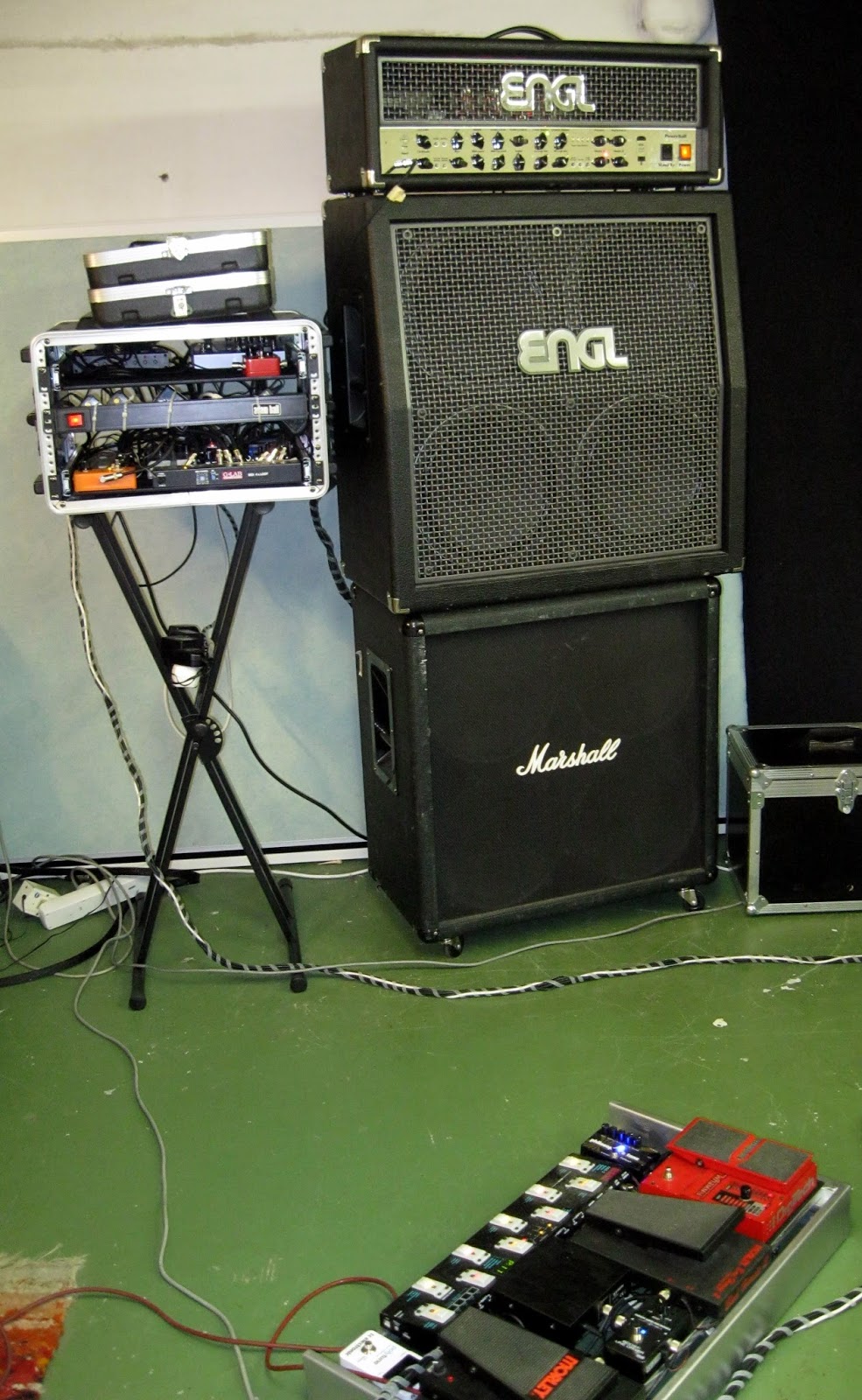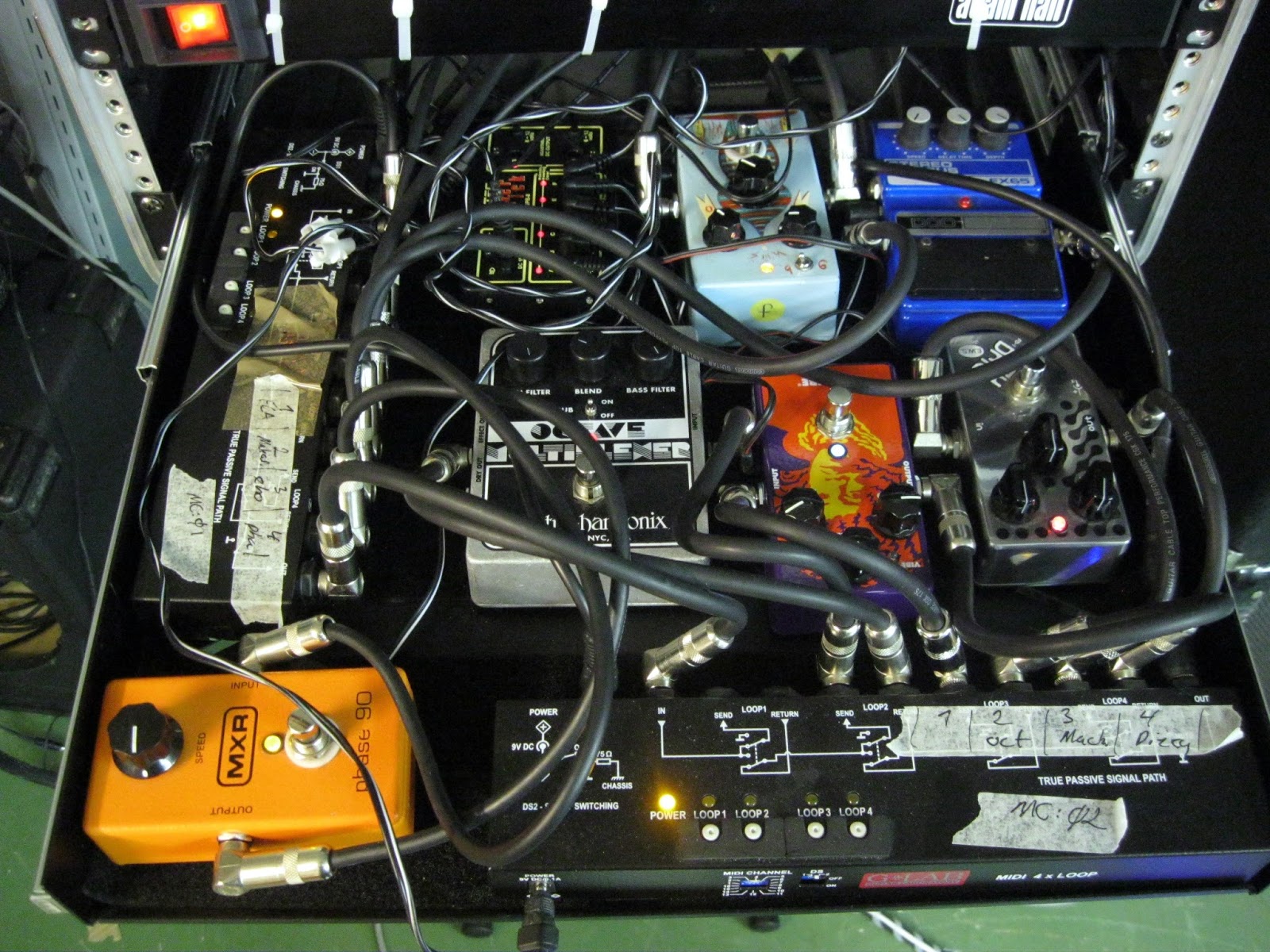Hi!
I know I just the other day explained to you about my current guitar rig. Even though I did not include any pictures I'm pretty sure that you will believe me when I say that my current rig is rather large and weigh some heavy kilos :-(. I have also realized that so many components wired together makes a very sensitive system. Hum sometimes becomes a problem at some places and reassemble the rig after transporting easily makes it malfunctioning. And since it's a complex setup finding the error might take long time even though the error might be of simple character. Having said that, I love the sound of my rig and I think it's worth the hassle. But what if I could have the sound and the versatility of my rig and at the same time somehow get rid of the hum problems and the sensitivity of the connections.
What about a good multieffects unit you might say. Yes, I've thought about that several times. But after testing, or just reading the manual, I've every time discovered two major problems.
- The feel of playing it. I'm talking about the amp and cabinet simulations. Even though the virtual amps might sound fairly good it feels really strange to play them. There is some interaction between the guitar and a good tube amp that the simulation models just don't handle. To me it is really important how the amp feels. A good tube amp can inspire you totally with how it is boosting, sustaining and feedbacking your notes.
- I like to use effects in my sounds. Almost every multieffects unit I have looked at, until I gave up, have had some limitations when it comes to the order of the effects. The only effects I use after the gain stage in my amp are delay and reverb, all other effects are placed before the amp. An example: in the multieffects I've looked at they have placed all the modulation effects after the gain stage. I, and Eddie VH, use a phaser before distortion sometimes, that is impossible with these kind of multieffects. :-(
BUT! I stumbled on a multieffects unit a couple of years ago that claimed to have the tube amp feel covered in their simulations. It also claimed to have no restrictions what so ever about the order of the effects. A lot of effects where also covered, and not just the most common ones. The only problem was the prize tag :-(. It was, and is, a much more expensive unit than any other multieffects unit on the market.
Since I first discovered it I have seen that more and more people have started to use it. New models have also been introduced to the market that further enhances the experience. As you might have guessed I'm talking about the Axe FX from Fractal Audio.
The newest model Axe Fx II Mk2 looks really good on paper, but I have not heard it irl. There exists a lot of youtube movies that shows how good it sounds, and I agree with them. But still, you need to try one out to hear how it really sounds like and how it feels like playing it. In Europe there is only one distributor and they are selling it on the web, so trying one out in a store is impossible here. But the distributer in Europe, G66, has the policy that if you buy a unit and don't like it, you can return it. There sometimes exists some used Axe Fx units on ebay-like sites here in Sweden. But then I'm talking about the older versions. The version II Mk2 are twice as powerful as the old version, has a new more sturdy connector for the cable between the midi controller and the Axe FX and it acts as a sound card for you computer as well. So to be able to replace my ENGL Powerball it has to be good, so the version II it has to be.
A couple of days ago I received this:
 |
| A package from G66.eu! |
 |
| One expression pedal with spring load |
 |
| First package inside the package |
 |
| 10 m cable between the midi foot controller and the Axe Fx |
 |
| A network adapter and the MFC-101 midi controller |
 |
| The MFC-101 midi controller |
 |
| The next package inside the first package |
 |
| Another package inside that one. Well packed!! |
 |
| From Fractal Audio this also ;-) .... |
 |
| Take care of your customers! Make them feel at home! |
 |
| A letter with first name on |
 |
| A personal letter.... |
 |
| Finally the Axe Fx II Mk 2 unit |
 |
| The whole shipment! |
So the next step on the agenda is to try this baby out!! The first impression is that everything is really heavy duty when it comes to the mechanical design. Really robust and sturdy!! Unfortunately I have not been able to take this babe out for a test drive yet, so I cannot give you a review about the sound, feel etc..
Soo, I have to leave you now and hook this babe up and give it a try!! I'll be back with the details!
Rock on!!
































